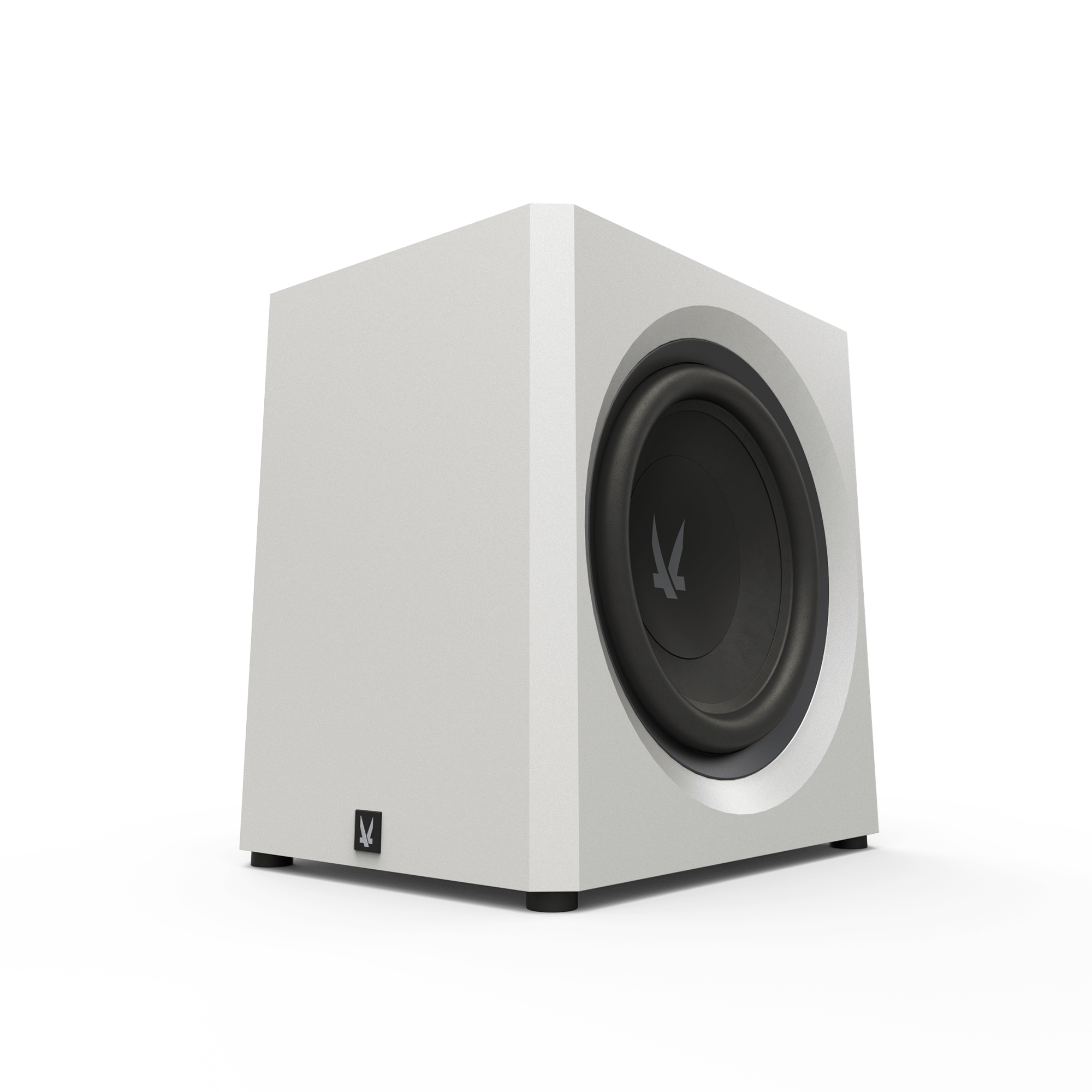NICE BASS!
“Prior to this we have tested and enjoyed the Arendal Sound 1723-series. First, they conquered Norway, then Scandinavia and later Europe. Here comes the next series, 1961. We have tested both subwoofers.
By: Magnus Fredholm.
Arendal Sound have told us that 1961 is going to be cheaper than 1723 and 1961 will also become a complete system down the line. First up for launch are the subwoofers 1S and 1V (Sealed and Vented), where 1V also can be used in sealed mode.
Save without skipping
We do recognize the looks but there are also several minor differences to the more expensive 1723-series. First the enclosure material (still HDF by the way!) doesn’t feel as thick and the bottom plate isn’t separated by a groove. It’s hard to tell without disassembling the subwoofer but I do believe the bottom plate is single compared to the 1723-series double plate.
The finish is also new. Matte and coarse and when I praised Jan Ove (owner of Arendal Sound) for it he said, “it’s a nice lacquer at a lower price point than what we have used earlier, and we are very pleased to be able to skip vinyl wrap”. It’s a nice finish and the black version blends seamlessly into a dark home cinema while the white one melts into a modern home.
The driver, that I still haven’t disassembled looks like we are used too from the 1723 series. But the size has shrunken from 13,8” to 12,2”. Another cost saver is the speaker grille that is cloth covered plastic.
New amplifier
When it comes to the amplifier and the DSP, we find both cost savers and improvements. There are only RCA connectors, two of each, but also higher power (+50W) and finally completely crazy setup options.
All options are controlled with two buttons, a wheel and a color display. And I’m thankful Arendal Sound went with a high timer before the system exits the setup menu. One thing I’m not as thankful for is that for some settings (Q-values for the parametric EQ in particular) you will have to turn the wheel like crazy to get from Q=1 (standard value) to Q=10 (slimmest setting) since it’s 0,01 increments and you cannot make it skip faster in any way I found.
But it might as well be user error because I have no instruction manual, no idea if it is possible to set it up via computer (USB B on the amplifier plate might suggest this, but without a proper software nothing happens when I connect a computer), and this entire test is done entirely by me without any means of assistance. It’s great fun and I’m pretty sure I’ve found every setting!
Nice bass!
I haven’t had them for very long but both subwoofers impress me very much! Tight, authoritatively and heavy bass summarizes the impressions where 1V gives an even more physical experience than the small 1S. If we let 1V breath freely through the slot port, you get that abyss feeling without losing any tightness.
1S is the more well behaved of the two, and this relatively compact subwoofer fits just as well into an apartment, a studio or a smaller home cinema. And movies are what it’s all about for us and a ported 1V is undoubtedly the most massive movie experience. Personally, I choose 1S but both subwoofers undoubtedly get “Toppklassbetyget” (top class rating)!
Brilliant settings
The first menu is called Levels and of course it controls the subwoofers levels, but in a few different ways. You can turn reference level on/off and with this off you can control the input level (volume) +-20dB. You can also control the input gain, -12, -6, 0 and +6dB.
Next menu is Crossover. First, you can turn the entire crossover on/off and if you choose to turn it on the frequency can be set between 30 and 160 Hz, while the steepness can be set to 24, 18, 12 or 6dB/octave. This is also where you control the phase (in 10° increments, 0–180°) and to make the setup complete you can even invert the signal. You don’t have to turn the phase setting all the way over, nice! The last of the crossover settings we find (somewhat unexpected) setups for Eq 1/Eq 2 and the difference is very visible in the measurements.
The menu for adjusting the tone curve is called Parametric EQ and here you control three bands that can be moved between 12 and 200 Hz with Q-values set between 0,1 and 10 (standard values is 1) and level adjustment from –10 to +3dB.
The setup menu also allows you to save your setups in up to 4 presets. You can also choose how many subwoofers you have in total (1, 2 or 4, requires the volume to be set to reference level). There is also a very detailed subsonic filter with adjustable steepness (6/12dB) and it can be adjusted between 12 and 31 Hz. This is also where you can choose if the subwoofer should turn on automatically when it receives a signal, through trigger or both.
One option I still don’t quite grasp is the option to choose between input 1, 2 or both. This might have something to do with the different Auto-On/trigger settings. I’ll have to get back to this. A well-received function is the ability to choose for how long the subwoofer will remain on without signal. This can be adjusted from 5 to 60 minutes as well as the sensitivity for Auto-On can be adjusted in three steps. The last of the menu options is to control the displays brightness as well as the option to show what firmware version the subwoofer is running.
[Comment to measurement: Here you see both subwoofers, 1S is blue, 1V sealed is red and 1V ported is green. The measured difference between red and blue is very slim, but it feels larger.]
[Comment to measurement: Crossover, 24dB/octave. Blue is bypass, red is 120Hz then 80, 55 and last 30Hz. A well-developed filter.]
[With the crossover set to 30Hz it becomes very visible what happens if you change the steepness of the filter. Blue is 24/octave, the other curves are 18, 12 and 6dB/octave.
[Comment to measurement: Eq1 (blue) and Eq2 (red) measured on 1S]
[Comment to measurement: Parametric set to 40Hz –10dB with different Q values. Red is Q=1, green is Q=3 and black is Q=10. Blue is without EQ.]
[Comment to measurement: This is the subsonic filter with 12dB/octave. Blue is without subsonic filter, red is at 12Hz, then 16, 21, 25 and finally 31Hz, (light green). Very convenient and a nice feature.]
FINAL VERDICT
TOP CLASS!



